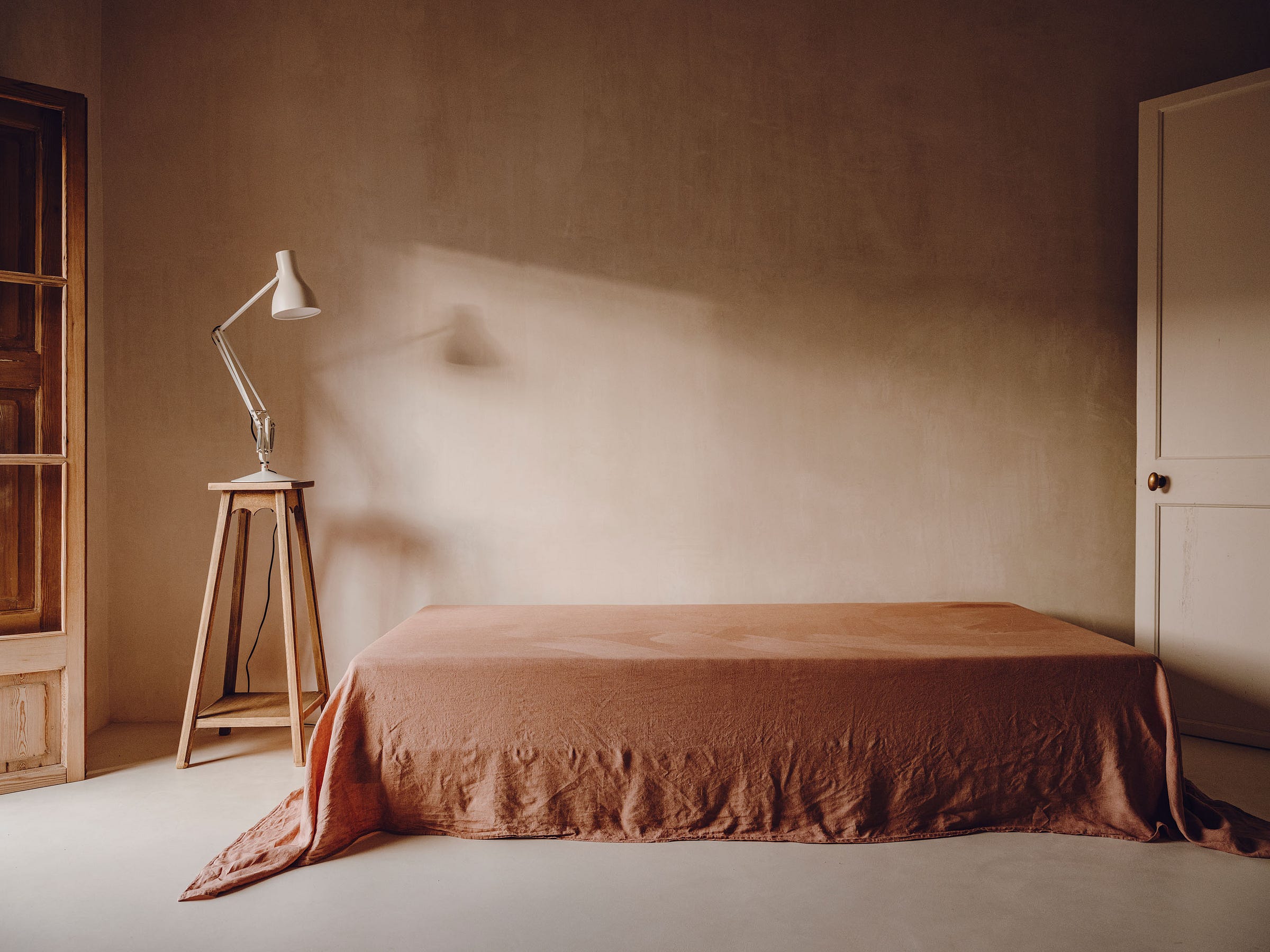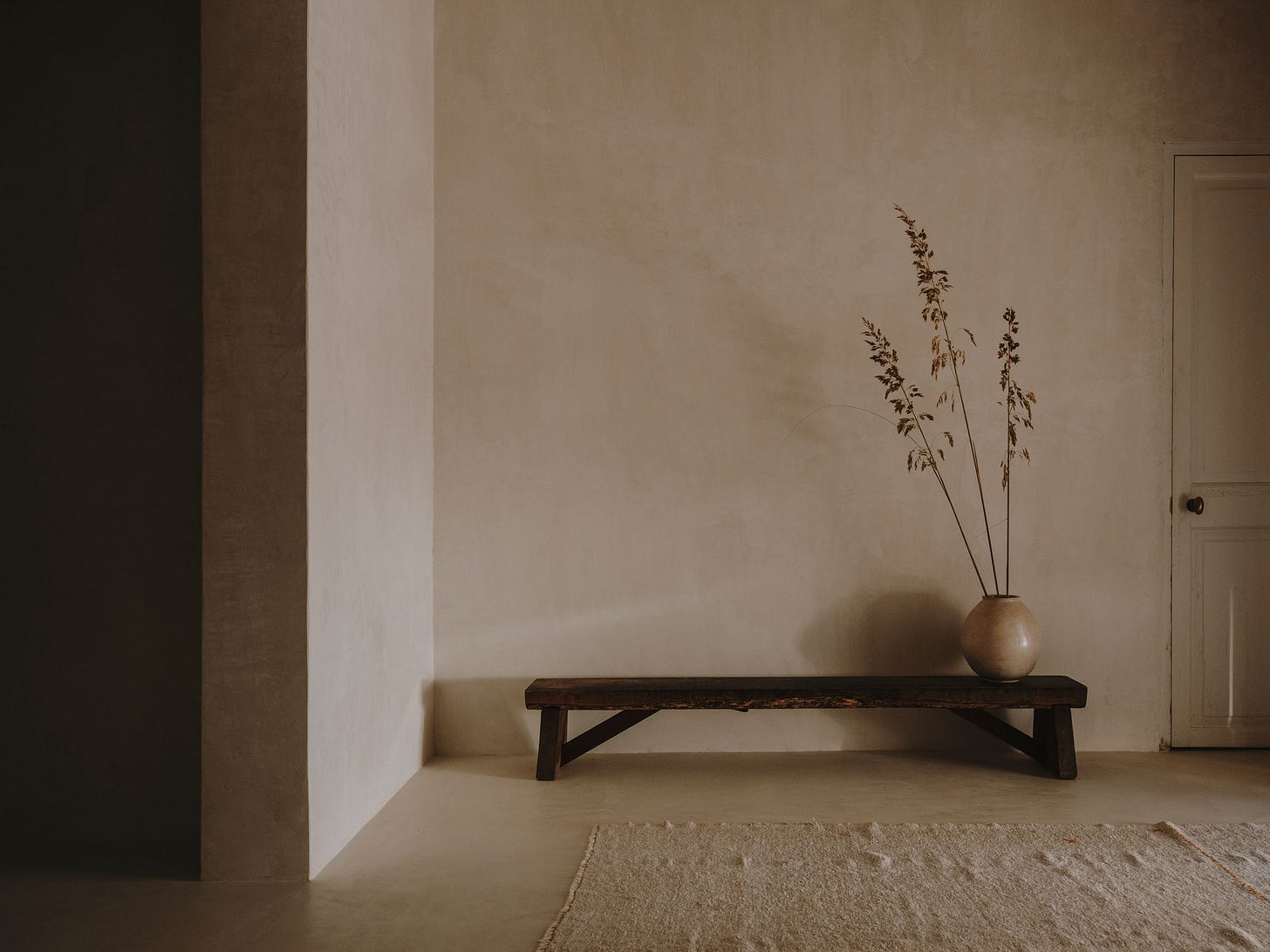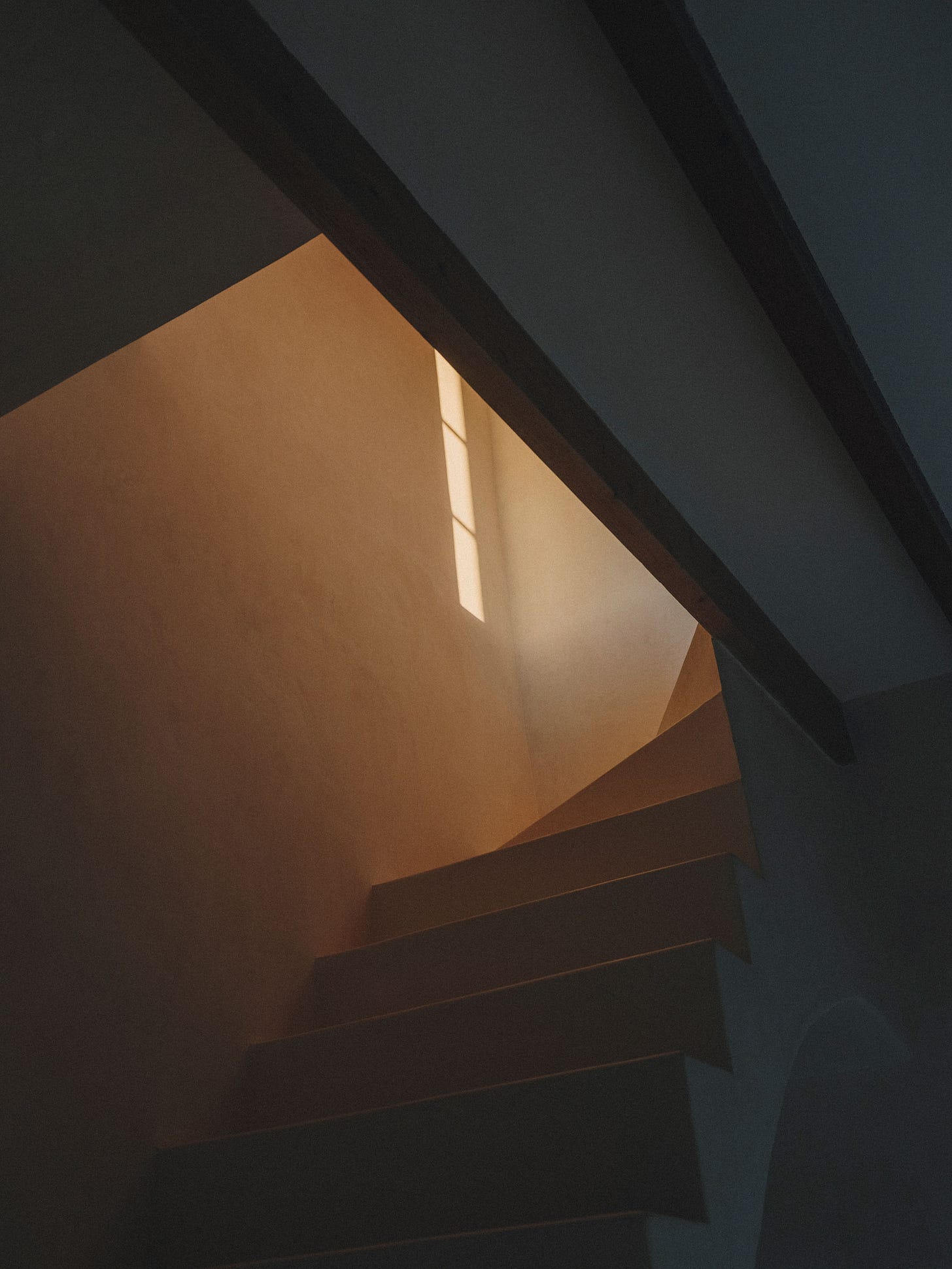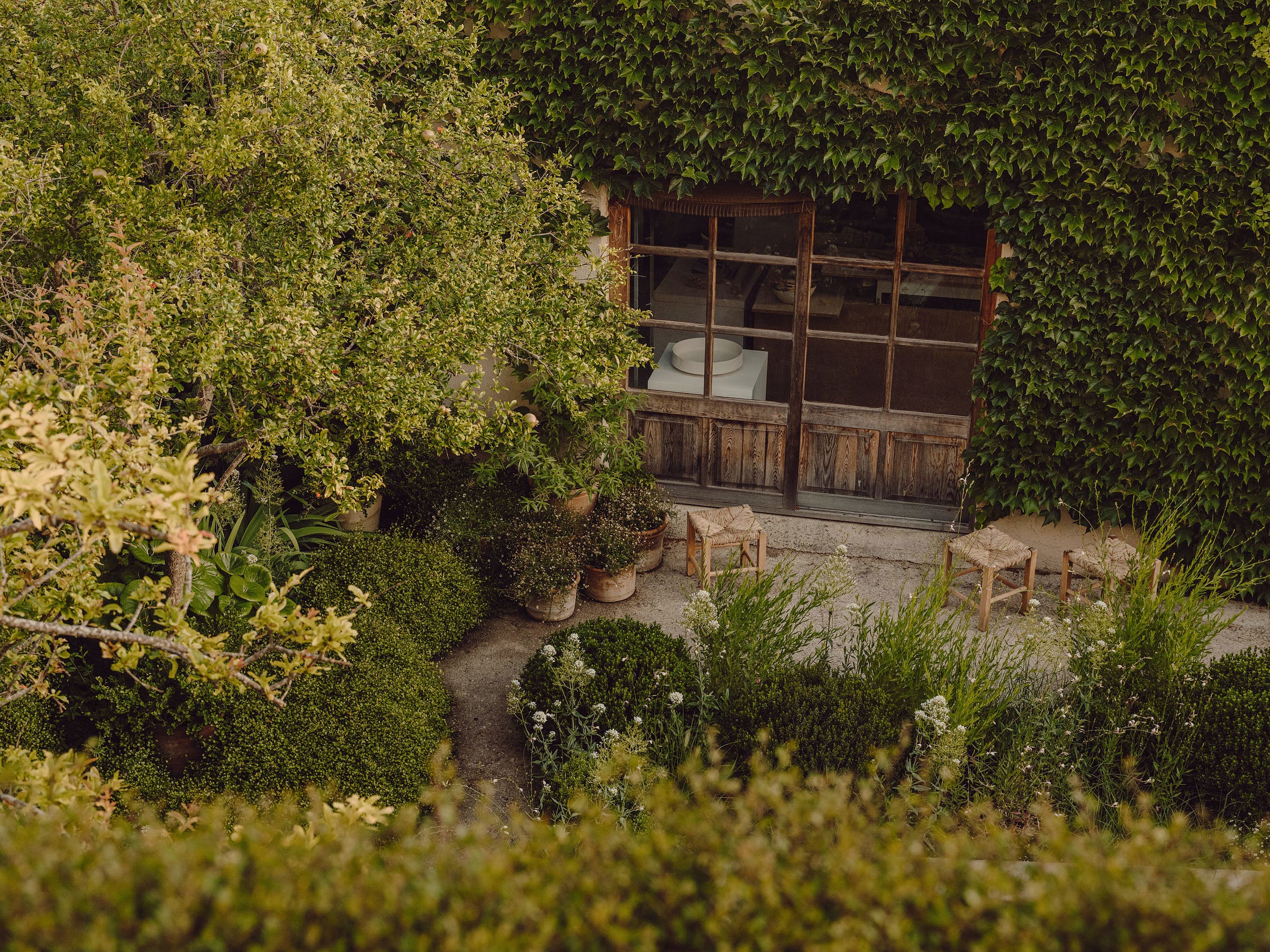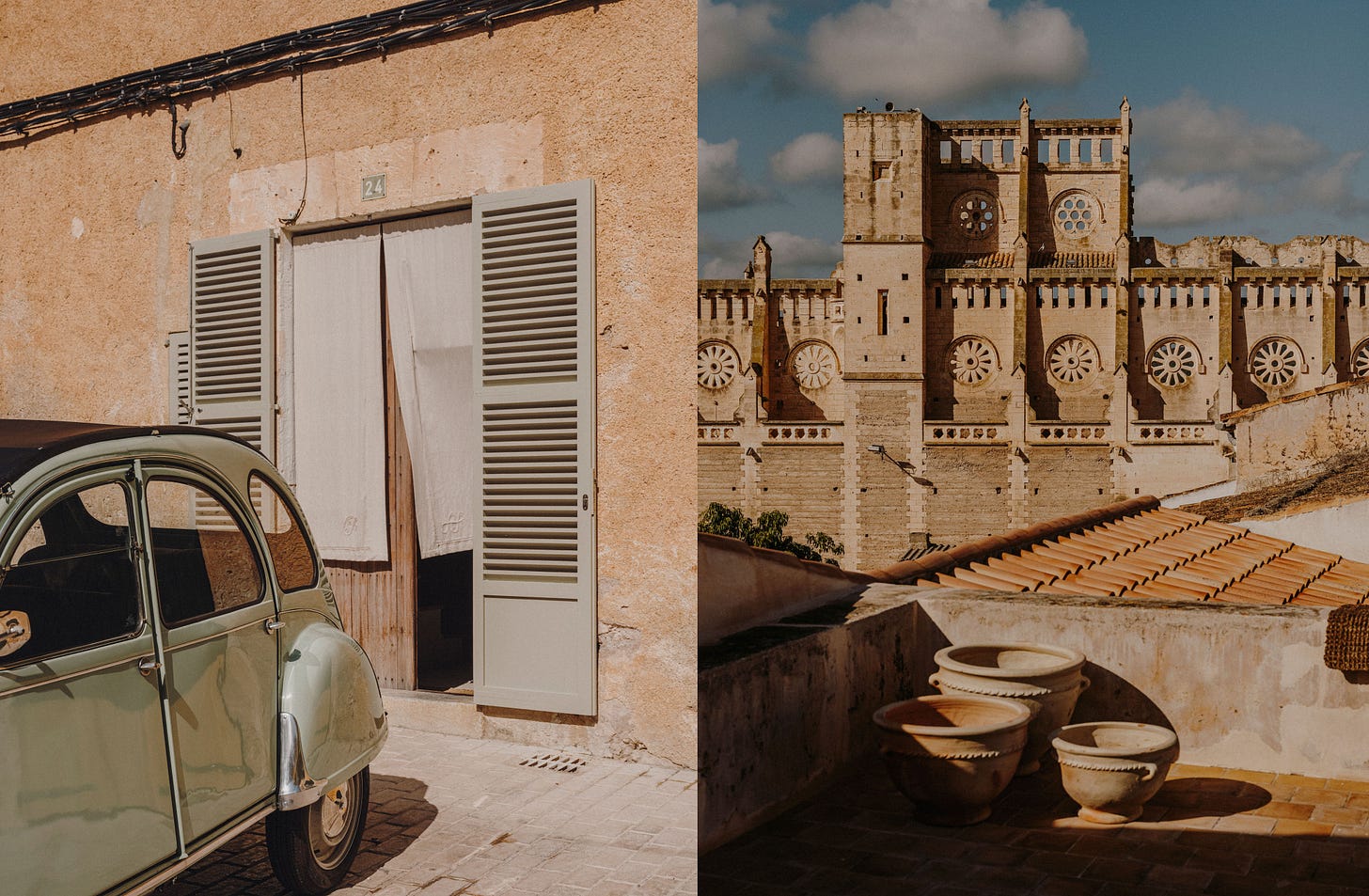English below
Llegamos al aeropuerto de Barcelona, donde nos piden el certificado de trabajo que nos permitirá tomar el avión hacia Mallorca. Es 17 de junio de 2020 y este es mi primer avión en meses. Un vuelo inusual en un aeropuerto fantasma. Casi puedo contar los vuelos que aparecen en la pantalla con los dedos de las manos.
Durante los tres meses de confinamiento, fantaseo con tener un jardín y no estar confinado en un apartamento sin balcón en medio de la ciudad. Observo las historias que Luciano publica en Instagram y siento una envidia no muy sana. Además, sabe jugar muy bien con la insinuación y cada pequeño video o foto que publica me deja cada vez más intrigado. ¿Dónde está esa casa? ¿En medio del campo? ¿En un pueblo? ¿Y ese muro de piedra serpenteando por el terreno? Mi imaginación recrea estancias y espacios, algo que a menudo puede ser un arma de doble filo, ya que lo imaginado suele superar a la realidad. ¿Será esta visita una decepción más?
Estoy a punto de descubrirlo. En este viaje voy con Ricard, mi hermano, Andrew y Marcelo. Vamos a tomar fotos y vídeos en Potter’s House para la revista Openhouse. El plan suena idílico, especialmente después de haber estado encerrados tanto tiempo. Más que un viaje de trabajo es un viaje con amigos.
Nos dirigimos al este de la isla, a Son Servera, un pueblo como tantos otros de Mallorca. Su particularidad es una iglesia a medio construir, la llamada ‘Esglesia Nova’ (iglesia nueva) ahora convertida en una especie de ruina que le otorga un carácter singular al pueblo. Por lo demás, hay casas de piedra adosadas al estilo tradicional mallorquín, con calles estrechas, tonos ocres y sus típicas contraventanas de colores pastel.
La cita está programada para las 18h bajo una lluvia que acaricia los últimos vestigios de la primavera mediterránea. Pronto, el lugar caerá en el letargo estival, esperando las primeras lluvias de septiembre. Subimos calle arriba, ya que el pueblo se asienta en la ladera de una pequeña montaña, en una zona repleta de campos y montes suaves cubiertos de pinos, acebuches y encinas que generan un panorama mediterráneo bastante idílico. En este paisaje me siento en casa, ya sea en España, Italia o Grecia.
Reconocemos rápidamente la entrada por sus cortinas de lino con PH bordado en ellas. Me recuerdan a las cortinas ‘noren’ japonesas y, aunque es un detalle sutil, ahí comienzo a notar que hay algo especial en esta casa, por lo demás, muy parecida a sus vecinas.
En estos pueblos, aunque sencillos, se aprecia el esfuerzo pasado por crear algo significativo, trascendente. Desprenden dignidad y belleza. ¿Cómo hemos perdido esa capacidad? ¿Por qué prácticamente todo lo nuevo es aséptico, funcional, sin alma? Es algo en lo que pienso recurrentemente y me entristece. La modernidad nos ha llevado a vivir más y de una manera cómoda, pero a costa de destruir algo profundo en nosotros, a desconectarnos del resto de la naturaleza y nuestra tradición. Hoy somos piezas sueltas dentro de una sociedad global, perfectos consumidores. Las nuevas ciudades, diseñadas por arquitectos y urbanistas muchas veces a miles de kilómetros de distancia, resultan ser uniformes, grises y tristes, sin ningún respeto por el legado local. Incluso un barrio de casas parece no comunicarse entre ellas. Aunque todos lo anhelamos —de allí el turismo masivo a lugares históricos—, me muestro pesimista sobre nuestra capacidad futura de construir comunidades como esta, de volver a generar una belleza genuina, de mirar más allá de nuestro ombligo.
Nos recibe Luciano, nuestro anfitrión, un paisajista toscano afincado en Londres que ha comprado esta peculiar casa y la ha renovado intentando respetar al máximo su esencia. Nos pide descalzarnos. Mi primera impresión es la de alguien muy enérgico y obsesionado con el orden y la limpieza. El recibidor, típico de los casas tradicionales mallorquinas, es un espacio donde ves todo el recorrido por diferentes estancias hasta llegar al patio. Un antiguo banco japonés con una cerámica y una alfombra acorde con los tonos de la casa, son los únicos objetos que nos reciben. Se respira una atmósfera muy particular, casi sacra.
La luz juega en un equilibrio constante entre claridad y oscuridad. Me viene a la mente el libro ‘El elogio de la sombra’ de Tanizaki. Tanto las paredes como el suelo están recubiertos de un estuco de cal natural, que hace que la luz rebote y se tiña en tonos sutiles. Me fascina como los tonos cálidos del sol se entremezclan con los fríos.
Empiezo a intuir que voy a disfrutar mucho estos días.
Hacemos un recorrido rápido por la casa —me sorprende que no es particularmente grande, pero tiene el tamaño ideal— y nos sentamos en unos taburetes bajos en el patio para tomar el té que Luciano nos ofrece. El patio consta de una pequeña alberca rodeada de vegetación, dos granados, un ciprés y, al fondo, el antiguo taller de la ceramista Maria Antonia, la anterior propietaria de la casa, cubierto de parra virgen. La parra está en flor y se escucha un zumbido constante de abejas. No parecen agresivas, pero intento no acercarme mucho por allí.
Luciano ha hecho, de esta casa, una residencia para ceramistas en honor a Maria Antonia, de allí ‘Potter’s House’. Ya antes de la compra por parte de Luciano, la casa era una parada obligatoria para los amantes del arte y la artesanía. Figuras como John Pawson o Axel Vervoordt ya habían estado por aquí.
Una vez al año invita a un artista a crear una colección para después exponerla por toda la casa. A nuestra llegada esta repleta de piezas realizadas por Maria Kristofersson. Estos objetos me recuerdan a las casas de campo ibicencas, una tipología de construcción que se repite por todo el mundo.
La lluvia ha dejado el patio húmedo y vivo. Uno se siente como en un oasis, o mejor dicho, en una especie de claustro en medio del pueblo. La vista lateral de la iglesia inacabada ayuda todavía más a generar esta sensación.
Mi hermano está nervioso, hacer videos requiere un poco más de preparación que las fotos. Andrew y Marcelo charlan con Luciano y yo saco la cámara y empiezo a disparar o, más bien, a fluir. Me encantan este tipo de lugares, donde no hay que recolocar nada, simplemente esperar a que la luz haga su magia.
A veces me preguntan cuál sería mi encargo perfecto. Este sería un buen ejemplo.
De aquel momento surgió una relación a largo plazo con Luciano, con el que llevo colaborando desde ese día documentando la casa y el jardín que está realizado junto a Artur Serra Costa a las afueras del pueblo.
En una entrada anterior, compartí cómo la visita al estudio de Fernando Caruncho y el confinamiento obligado por el virus fueron determinantes en mi anhelo por tener un jardín. Sin embargo, conocer a Luciano, con su contagioso entusiasmo, fue decisivo. Esta casa ha sido uno de los lugares más inspiradores que he tenido la suerte de visitar. Tras esa experiencia, comprendí que debía dejar Barcelona. La ciudad ya no tenía nada nuevo que ofrecerme; era hora de mudarme a un pueblo. Dejar de ser un individuo solo en el mundo e intentar formar parte de algo más.
Durante ese viaje, me sorprendió sentirme enfadado sin saber exactamente por qué. Con el tiempo, he entendido que estaba luchando conmigo mismo. Había invertido mucho en ser un urbanita, moderno y 'cool', y la idea de abandonar ese estilo de vida me hacía sentir que estaba traicionando parte de mi identidad. La perspectiva de un cambio de este tipo perece idílico, pero también significa tener que enfrentarse al ego, lo cual nunca es sencillo. Hasta entonces, mi vida giraba en torno a objetivos superficiales: ganar más dinero, más 'likes', atraer a mejores clientes, comer en los mejores restaurantes, vestir marcas exclusivas y destacar. Reconocer que seguir allí no era muy buena idea parece fácil, pero lo más simple muchas veces se revela como lo más complejo.
Más fotografias en mi web y en Openhouse.
El video que grabó mi hermano.
El trabajo de Luciano Giubbilei.
Libros:
El elogio de la sombra - Jun'ichirō Tanizaki
The Art of Making Gardens - Luciano Giubbilei
We arrive at the Barcelona airport, where we are asked for the work certificate that will allow us to board the plane to Mallorca. It's June 17, 2020, and this is my first flight in months. An unusual flight at an ghostly airport. I can almost count the flights displayed on the screen with my hands.
During the three months of confinement, I fantasized about having a garden and not being confined in an apartment without a balcony in the middle of the city. I watch the stories Luciano posts on Instagram and feel an unhealthy envy. Moreover, he knows how to play very well with insinuation, and every little video or photo he posts leaves me more and more intrigued. Where is that house? In the middle of the countryside? In a village? And that stone wall winding through the land? My imagination recreates rooms and spaces, something that can often be a double-edged sword, as what is imagined often surpasses reality. Will this visit be another disappointment?
I'm about to find out. On this trip, I'm going with Ricard, my brother, Andrew, and Marcelo. We're going to take photos and videos at Potter’s House for Openhouse magazine. The plan sounds idyllic, especially after having been locked up for so long. More than a work trip, it's a journey with friends.
We head east on the island to Son Servera, a town like so many others in Mallorca. Its particularity is a half-built church, the so-called 'Esglesia Nova' (new church), now turned into a sort of ruin that gives the town a unique character. Besides, there are stone houses attached in the traditional Mallorcan style, with narrow streets, robust walls, ochre tones, and their typical pastel-colored shutters.
The appointment is scheduled for 6 pm under a rain that caresses the last vestiges of the Mediterranean spring. Soon, the place will fall into summer lethargy, awaiting the first rains of September. We walk up the street, as the town sits on the slope of a small mountain, in an area full of fields and gentle hills covered with pines, wild olive trees, and holm oaks that create a quite idyllic Mediterranean panorama. In this landscape, I feel at home, whether in Spain, Italy, or Greece.
We quickly recognize the entrance by its linen curtains with PH embroidered on them. They remind me of the Japanese 'noren' curtains and, although it is a subtle detail, that's where I begin to notice that there is something special about this house, otherwise very similar to its neighbors.
In these towns, though simple, one appreciates the past effort to create something significant, transcendent. They exude dignity and beauty. How have we lost that ability? Why is practically everything new sterile, functional, soulless? It's something I think about recurrently and it saddens me. Modernity has allowed us to live more and in a comfortable way, but at the cost of destroying something deep within us, of disconnecting us from nature and our tradition. Today we are loose pieces within a global society, perfect consumers. The new cities, designed by architects and urban planners often thousands of kilometers away, turn out to be uniform, gray, and sad, with no respect for the local legacy. Even a neighborhood of houses seems not to communicate with each other. Although we all long for it —hence the mass tourism to historical places—, I am pessimistic about our future ability to build communities like this one, to generate genuine beauty again, to look beyond our navel.
Luciano, our host, a Tuscan landscaper based in London who has purchased this peculiar house and renovated it while trying to respect its essence as much as possible, welcomes us. He asks us to take off our shoes. My first impression is of someone very energetic and obsessed with order and cleanliness. The entrance hall, typical of traditional Mallorcan houses, is a space where you can see the entire route through different rooms until reaching the patio. An old Japanese bench with a ceramic piece and a rug matching the tones of the house are the only objects that greet us. A very particular, almost sacred atmosphere is palpable.
The light plays in a constant balance between clarity and darkness. The book 'In Praise of Shadows' by Tanizaki comes to mind. Both the walls and the floor are covered in natural lime stucco, which makes the light bounce and tint in subtle tones. I am fascinated by how the warm tones of the sun intertwine with the cool ones.
I begin to sense that I am going to enjoy these days very much.
We take a quick tour of the house —I'm surprised it's not particularly large— and sit on low stools in the patio to have the tea Luciano offers us. The patio consists of a small pool surrounded by vegetation, two pomegranate trees, a cypress, and at the back, the old workshop of the ceramist Maria Antonia, the previous owner of the house, covered with virgin grapevine. The vine is in bloom, and a constant buzzing of bees can be heard. They don't seem aggressive, but I try not to get too close.
Luciano has turned this house into a residence for ceramists in honor of Maria Antonia, hence 'Potter’s House'. Even before Luciano's purchase, the house was a must-visit for art and craft lovers. Figures like John Pawson or Axel Vervoordt had already been here.
Once a year, he invites an artist to create a collection to then display it throughout the house. Upon our arrival, it's full of pieces made by Maria Kristofersson. These objects remind me of the country houses in Ibiza, a type of construction that is repeated all over the world.
The rain has left the patio moist and alive. One feels like in an oasis, or rather, in a sort of cloister in the middle of the village. The side view of the unfinished church further enhances this sensation.
My brother is nervous, making videos requires a bit more preparation than photos. Andrew and Marcelo chat with Luciano, and I take out the camera and start shooting, or rather, flowing. I love these kinds of places, where there's no need to rearrange anything, just wait for the light to work its magic.
Sometimes people ask me what my perfect assignment would be. This would be a good example.
From that moment, a long-term relationship with Luciano emerged, with whom I have been working since that day documenting the house and the garden made alongside Artur Serra Costa on the outskirts of the village.
In a previous post, I shared how the visit to Fernando Caruncho's studio and the confinement imposed by the virus were decisive in my longing to have a garden. However, meeting Luciano, with his contagious enthusiasm, was crucial. This house has been one of the most inspiring places I've had the fortune to visit. After that experience, I understood that I had to leave Barcelona. The city no longer had anything new to offer me; it was time to move to the countryside. To stop being an individual alone in the world and try to be part of something more.
During that trip, I was surprised to feel angry without exactly knowing why. Over time, I've understood that I was fighting with myself. I had invested a lot in being an urban, modern, and 'cool' individual, and the idea of abandoning that lifestyle made me feel like I was betraying part of my identity. The prospect of such a change seems idyllic, but it also means having to face the ego, which is never easy. Until then, my life revolved around superficial goals: earning more money, more ‘likes', attracting better clients, dining at the best restaurants, wearing exclusive brands, and standing out. Recognizing that staying there wasn't a very good idea seems easy, but the simplest often turns out to be the most complex.
More photos on my website and Openhouse.
The video recordered by my brother.
The work of Luciano Giubbilei.
Books:
In Praise of Shadows - Jun'ichirō Tanizaki
The Art of Making Gardens - Luciano Giubbilei




